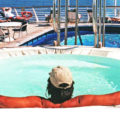
Mandatory lifeboat drill: Yum. It’s the first activity on the program of any cruise. And it’s probably everybody’s least favorite thing about their vacation at sea.
Maybe you’ve been to the drills so many times you think you’ve memorized the script. You know that seven short blasts of the ship’s whistle followed by one long one is the emergency signal. You may be tempted to just skip the briefing the way you do the safety show they do on planes . But shipboard procedures and equipment are changing to make heading out to sea even safer than it already is. So the more you know, the better.
Safety experts at a recent Seatrade conference in Fort Lauderdale demonstrated the latest high tech equipment designed to keep passengers warm, dry and safe in the extremely rare possibility of an emergency at sea. Here’s a new look at what’s made cruising the safest way to travel:
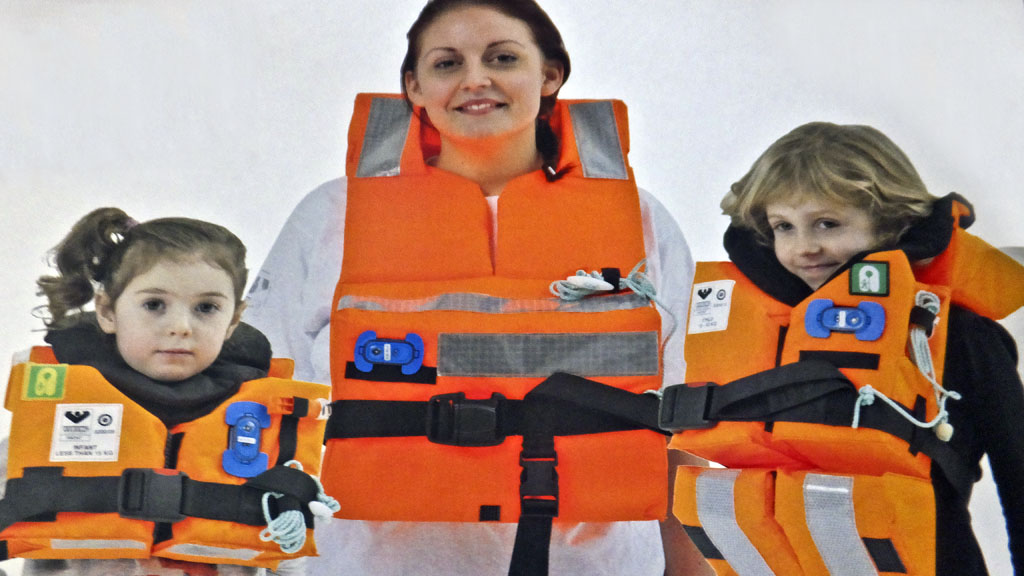
1) When They Say Mandatory, They Mean It
The old rules were that ships had to have a safety briefing within 24 hours of the start of the cruise, but no more. As of 2015, new international Safety of Life at Sea regulations require that ships hold the briefing for all guests before the ship can set sail. And they must take attendance.
Fortunately, on many new ships the drills are getting more comfortable. Rather than having guests wear their life vests from their rooms, the big Quantum and Oasis class ships of Royal Caribbean store them in compartments on deck, and they don’t have to be worn during the drills. And rather than having to yell out your name to a crew member taking attendance with a clip board, several lines now can just scan your room keycard on arrival to verify that you’re present and accounted for at the briefing.
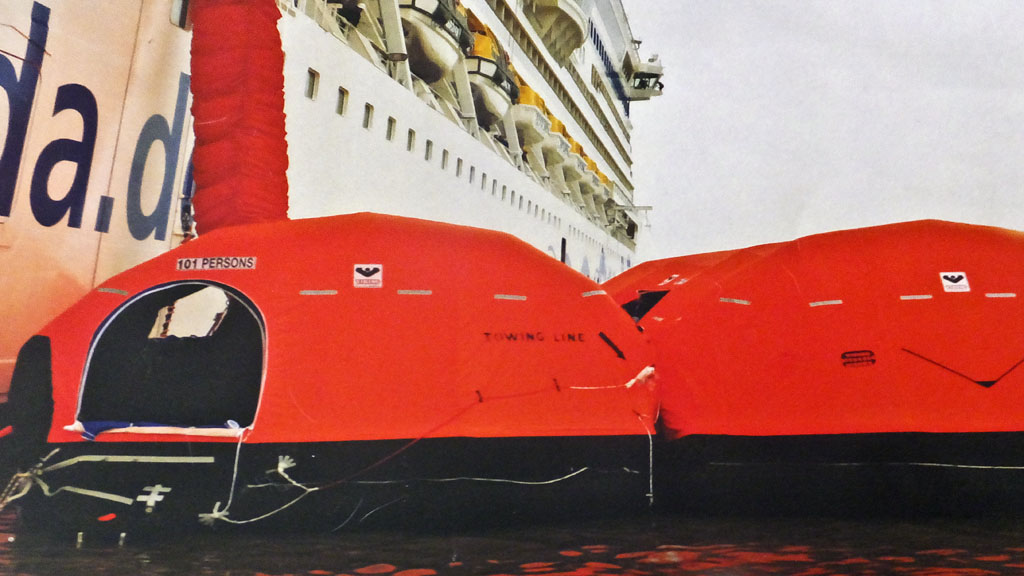
2) There’s Enough for Everyone
You may have counted the number of passengers at your muster station and wondered how so many people could fit into one of the life boats that line the deck.
Ships are required to have lifeboats, life rafts and life preservers for every person on board. There are always many more life vests than passengers on the ship, including extras under the seats of the life boats.
And modern ships are adding lots of backups:
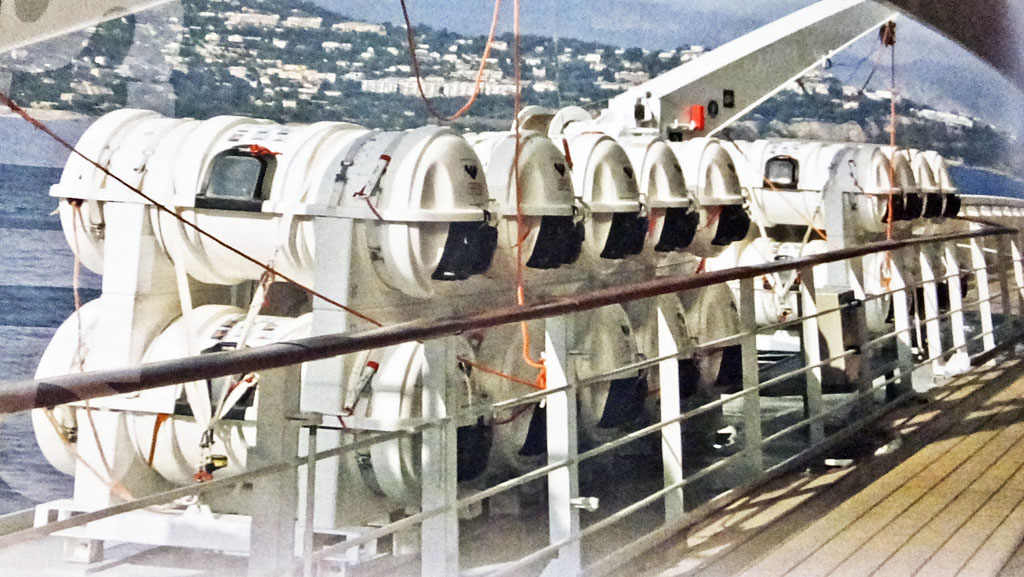
3) What Are Those Stacks of Cans on Deck?
They look a bit like oil drums, but the white cans that have appeared in recent years on most promenade decks are backups to life boats known as throw-overboard life rafts that inflate automatically when they’re tossed over the side. No matter how the raft lands in the water, it rights itself and is ready for boarding almost immediately after it hits the water, according to major manufacturer Viking Life-Saving Equipment.
Depending on the size, those cans contain rafts that can carry from 25 to 153 people. They’re equipped with emergency equipment and have multiple buoyancy compartments to keep the raft afloat even if one compartment is punctured.
There are also alternative rafts that look like tents when opened. They inflate automatically once their box is opened and can be boarded on deck and lowered into the water on lines.
https://www.youtube.com/watch?v=1WZtjrtt0D8
4) How Am I Supposed To Get Down There From Here?
As ships get larger they’re also taller; it gets to be a longer way from the deck to the water. It also may be tricky to lower a life boat from a listing ship. That’s why there’s a new generation of chutes and slides that open automatically to provide a cushioned ride to safety.
The latest design is known as an evacuation chute, an enclosed tube made of Kevlar that’s flame and water resistant. They’re stored in boxes along the deck and one pull of a release handle launches chutes that are ready for use within two minutes. Their elastic-like inner walls are designed to give you a slow, gentle descent to the life raft that’s attached below. Each chute can get 560 people off a ship in 30 minutes and there are many of them installed along the rails of ships.
5) How Could I Survive a Polar Bear Plunge?
As of 2017, any ship that sails in the Arctic or Antarctic will be required to have a cold-water immersion suit for every passenger and crew member. These one-piece hoodies – that generally come in bright orange or yellow – are not exactly fashion statements, but they float high and dry and are insulated to keep wearers warm even in ice-filled water for at least 25 hours. They come equipped with detachable gloves, lights and lines that can hook to other suits to keep people together until help arrives.
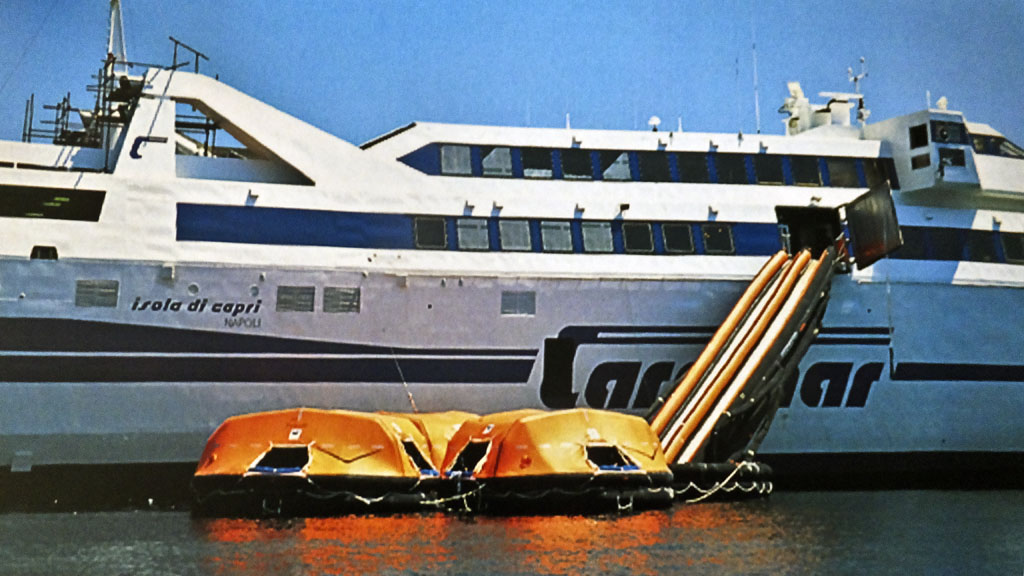
Good News: The Odds Are In Your Favor
There’s an excellent chance you’ll never have to personally try out any of these gadgets, because statistics show cruising is by far the safest way to travel.
Despite two high-profile incidents — the Costa Concordia foundering in 2012 and the Carnival Triumph fire in 2013 — overall cruise ship safety improved significantly between 2009 and 2014, according to a report published by maritime research company G.P. Wild International on behalf of Cruise Line International Association.
And even though the number of cruise ships increased, the study found the overall number of cases of fire, technical breakdowns, groundings, storm damage, collisions or passengers missing or overboard actually decreased by 15 per cent over those years.
In addition, when compared against other forms of transportation, cruising had by far the fewest fatalities per billion passenger miles, the report found.
In 2011, the most recent year for which data is available, the cruise industry saw a 0.08 passenger fatality rate per billion miles, as compared to 0.8 for commercial air. The riskiest way to travel turned out to be U.S. trains, with 11.9 deaths per billion passenger miles travelled. Passenger cars also proved much riskier, with 3.3 deaths per billion miles.
So you’re good to go. Enjoy your cruise!


